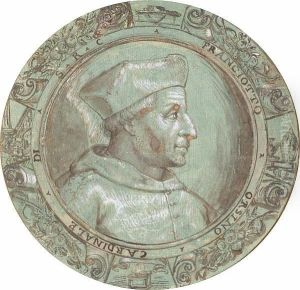Bernardino Capitelli Paintings
Bernardino Capitelli was an Italian painter born in 1589 in Siena, Italy. He is less known compared to the leading lights of the Italian Baroque, but his work still offers a glimpse into the artistic developments of the period. Capitelli was primarily influenced by the work of Caravaggio and his followers, which was spreading throughout Italy during his lifetime.
Capitelli's early life is not well-documented, but it is known that he was a student and a close follower of Rutilio Manetti, who was one of the principal Sienese painters of the time and deeply influenced by Caravaggio's dramatic use of chiaroscuro. Under Manetti's guidance, Capitelli learned the importance of dramatic lighting and naturalism. His style, however, evolved to incorporate a lighter palette and more delicate figures compared to the intense drama of Caravaggio's works.
During his career, Bernardino Capitelli worked on various religious commissions, which was typical for artists of his time. His paintings often depicted scenes from the Bible and the lives of the saints, rendered with a certain emotional intensity that was characteristic of the Baroque period. His works include altarpieces and frescoes for churches, as well as smaller-scale paintings for private devotion.
Despite his talent, Capitelli did not achieve widespread fame during his lifetime. His work was overshadowed by more prominent artists of the Baroque period, and many of his paintings have been lost or remain unidentified. Those that survive show his ability to blend the Sienese painting tradition with the innovations that were emanating from Rome and other art centers in Italy.
Bernardino Capitelli died in 1639 in Siena. Although not as well-remembered as some of his contemporaries, his contributions to the Baroque movement in Siena provide valuable insight into the diffusion of Caravaggesque styles across Italy. His existing works, though limited, continue to be studied by art historians and appreciated by art lovers for their combination of sensitivity and the dramatic flair that defines the Baroque era.
